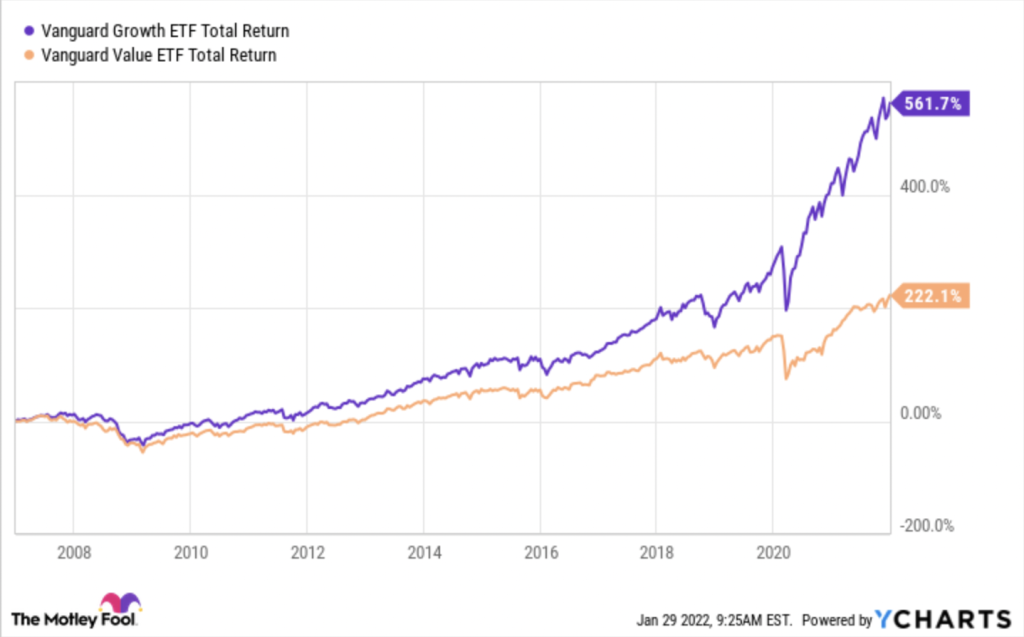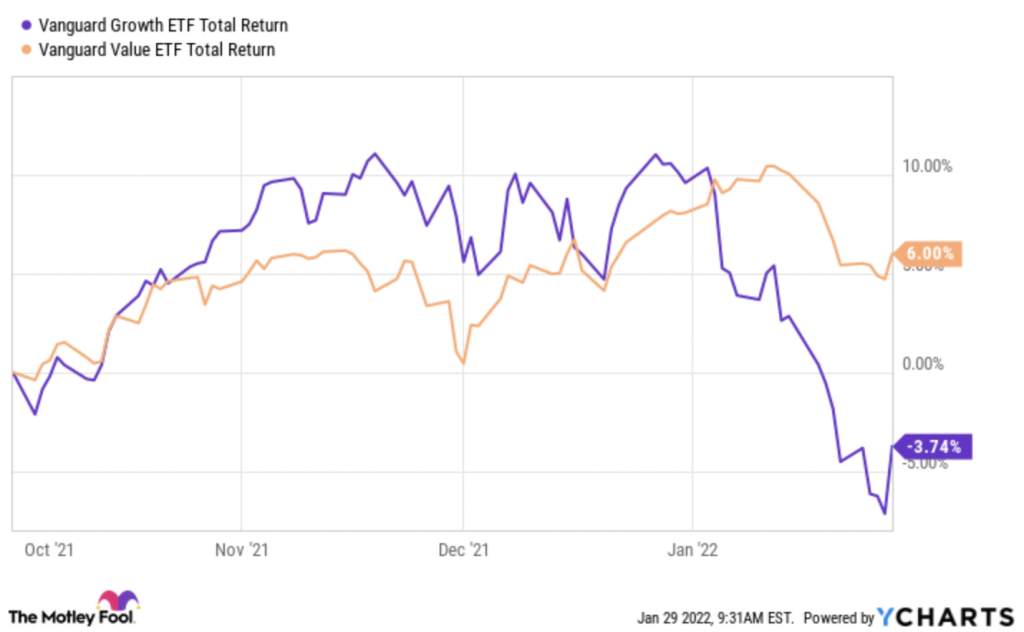These two dividend-paying pharma stocks ought to be top performers in 2022.
Growth stocks, on balance, have dramatically outperformed value stocks since the last major financial crisis. Historically low federal fund rates (the rate at which banks lend to one another), combined with enormous levels of fiscal stimulus by the U.S. government, were the main drivers behind this unprecedented 14-year-long bull run in growth stocks.

But with the Federal Reserve poised to roll out a series of interest rate hikes this year, value stocks are probably going to outperform growth stocks for the foreseeable future. In fact, value stocks have already started trouncing growth stocks, in terms of their total return on capital, since the beginning of the fourth quarter of 2021.

With this powerful trend reversal in mind, investors may want to load up on high-quality value stocks during the opening weeks of 2022. Which value plays are the best buys right now? The dividend-paying pharmaceutical stocks Takeda Pharmaceutical (NYSE:TAK) and Viatris (NASDAQ:VTRS) are both currently trading at dirt-cheap valuations. Here’s why investors may want to add these two drugmakers to their portfolios soon.
Takeda Pharmaceutical: An incredibly cheap high-yield dividend stock
Japanese pharma giant Takeda was one of the few major drug manufacturers to lose ground during the 14-year-long bull market. Various clinical setbacks, upcoming patent expiries, a highly leveraged balance sheet due to its acquisition of the rare disease specialist Shire, and a lack of a franchise-level medication all weighed on its shares during this period. Takeda’s shares, in fact, have lost almost a third of their value in just the past three years. However, the company’s stock now appears primed for a major reversal for three key reasons.
First off, Takeda’s Wave 1 clinical pipeline has started to generate some truly high-value commercial products recently. Late last year, for instance, the company scored two important U.S. regulatory approvals for the post-transplant cytomegalovirus infection drug Livtencity and the niche lung cancer medication Exkivity. Takeda believes these two drugs will help drive respectable levels of top-line growth all the way out to fiscal year 2030 and keep its ongoing deleveraging process on track.
Second, Takeda’s stock is presently trading at 1.5 times fiscal year 2022 projected sales. That’s easily one of the lower price-to-sales ratios in the major drug manufacturing space right now. Takeda, in effect, is a bona fide value stock. This ought to benefit the drugmaker’s share price in the current value-oriented market.
Third, Takeda pays out a sky-high annualized dividend yield of 5.6% right now. The company’s stellar yield is also well-funded, evinced by its fairly low payout ratio of 59.4%.
All told, Takeda’s stock ought to shine as investors rotate into pure-play value stocks and away from riskier growth equities.
Viatris: Stability and a top dividend yield
Viatris is a generic and biosimilar drug company. Since its formation a little over a year ago, the company’s shares have fallen by over 10.4%. Viatris’ stock has so far failed to excite investors due to its debt-laden balance sheet, lack of clear-cut growth products, and rather modest long-term outlook. The company, after all, isn’t expecting sustainable top-line growth until 2024.
Despite these headwinds, however, Viatris stock should appeal to investors with an eye toward value. The long and short of it is that Viatris’ stock is among the absolute cheapest within the realm of dividend-paying pharma stocks right now. Underscoring this point, the drugmaker’s shares are presently trading at less than one time forward-looking sales. What’s more, Viatris currently offers shareholders an above-average yield — relative to its peer group — of 3.29% on an annualized basis.
So while Viatris stock isn’t going to make shareholders rich anytime soon, this pharma stock does come across as a highly safe investing vehicle, thanks to its bargain bin valuation and attractive dividend yield. And Viatris’ top-notch margin of safety should prove to be a winning feature in this risk-averse market.







